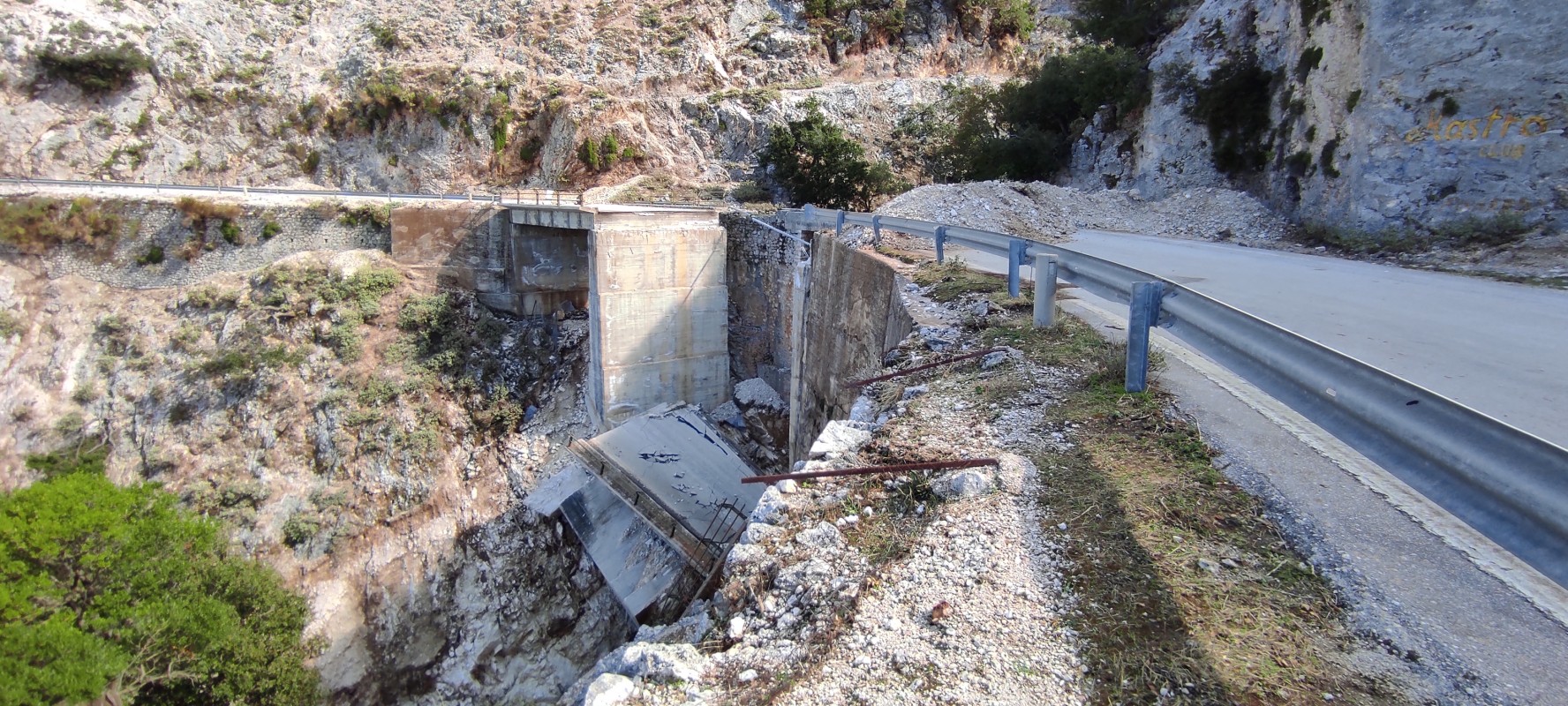Zekkos Leads GEER Mission for Medicane Ianos. Released Report documents thousands of landslides, bridge collapses and infrastructure damagel
Dec 10, 2020

Associate Professor Dimitrios Zekkos led a Geotechnical Extreme Events Reconnaissance (GEER) Mission to document damage from Medicane Ianos. Medicane Ianos, a Mediterranean Hurricane, impacted Greece on September 17-20 2020. A total of 31 participants from 6 Universities, 3 governmental organizations and 3 companies participated in the effort. Among them, Parker Blunts , UCB Geosystems PhD student, contributed to the effort by creating 3D models of affected areas that were mapped with UAVs.
During Medicane Ianos, the amount of precipitation during a duration of about ~48 hrs was among the highest recorded and exceeded, in certain areas, the mean annual precipitation. The extent of the affected area was very large and encompassed the western, central and southern Greece, all the way south to the island of Crete. The Ionian islands and the areas around Karditsa and Lamia in Central Greece were particularly affected.
Field deployments to collect perishable field performance data were supported by remote sensing tools and geospatial data analysis. The GEER team used optical and radar satellite imagery to generate a broad assessment of the conditions, as well as data-mined social media to identify sites of particular interest. On the ground, conventional site characterization tools were supplemented by Unmanned Aerial Vehicles to generate three dimensional models of target areas and sites. During field deployment, data collected in the field were uploaded on a shared Box folder and were projected on a web-based GIS map the next morning to facilitate collaboration among teams.
The amount of precipitation resulted in a wide variety a number of landslides. More than 1,400 landslides were mapped using satellite imagery and several debris flows devastated communities. Extensive flooding was also observed throughout the affected areas nationwide. Lower-elevation areas were flooded, and portions of the town of Karditsa and surrounding communities became completely submerged. The amount of water compromised, in numerous areas, the road and railroad network by washing out roads or railroad lines, damaging the embankments that supported the pavements, or disrupting their functionality by landslide debris. Particularly pronounced was the damage to many bridges, ranging from minor damages (such as movement) to complete collapse due to foundation scour, or lateral loads by water and debris. Riverbanks and levees were also overtopped and scoured.
Example photos from the GEER team response are provided below.
The report can be found on the GEER website here: http://geerassociation.org/index.php/component/geer_reports/?view=geerreports&layout=build&id=95
And as a pdf here: http://geerassociation.org/administrator/components/com_geer_reports/geerfiles/Medicane%20Lanos%20GEER%20Report.pdf
Report Citation: Zekkos D., Zalachoris G., Alvertos, A. E., Amatya P. M., Blunts P., Clark M., Dafis S., Farmakis I., Ganas A., Hille M., Kalimogiannis V., Karagiannidis A., Karantanellis E., Khan K., Kirshbaum D., Kourkoulis R., Kotroni V., Ktenidou O.-J., Lagouvardos K., Loli M., Makrinikas A., Marinos V., Manousakis J., Nikas K., Panousis D., Papathanassiou G., Saroglou C., Simopoulos A., Stanley T., Tsavalas A., Valkaniotis S. “The September 18-20 2020 Medicane Ianos Impact on Greece - Phase I Reconnaissance Report”. Geotechnical Extreme Events Reconnaissance Report, GEER-068, https://doi.org/10.18118/G6MT1T.










